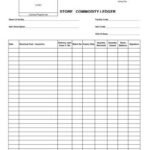
The cash flow statement (CFS) shows how cash is earned and spent by a company. The cash flow statement complements the balance sheet and income statement. Financial statements are reports compiled by businesses that detail the company’s financial activities and health.

Second: Statement of Retained Earnings
A company’s balance sheet provides an overview of the company’s assets, liabilities, and shareholders’ equity at a specific time and date. The date at the top of the balance sheet tells you when this snapshot was taken; this is generally the end of its annual reporting period. Your income statement, also called a profit and loss statement (P&L), reports your business’s profits and losses over a specific period of time. You can use an income statement to summarize business operations for a certain time frame (e.g., monthly, quarterly, etc.). Your business’s financial statements give you a snapshot of the financial health of your company. Without them, you wouldn’t be able to monitor your revenue, three types of cash flow activities project your future finances, or keep your business on track for success.
The income statement provides an overview of revenues, expenses, net income, and earnings per share during that time. As I mentioned before, when preparing financial statements manually, you’ll want to start with the income statement. Use the information from your income statement and retained earnings statement to help create your balance sheet. If they don’t, your balance sheet is unbalanced, and you need to find what’s causing the discrepancy between your assets, liabilities, and equity. As you can see all four general-purpose financial statements are prepared and presented here. Paul can use these statements internally to gauge the performance of his store for the year or he can issue them to lenders or investors to help raise funds to expand the store.
A statement of cash flow ties these two together by tracking sources and uses of cash. Together, these financial statements provide a picture of a business’s financial standing that is used by management, investors, governments, and lenders. These statements include the cash flow statement, the balance sheet, how to calculate variable cost per unit income statement, and the statement of retained earnings.
Step 3: Prepare the Balance Sheet
- Maintaining a healthy cash balance – aka, enough but not too much – is mission-critical.
- Audit opinions are the conclusions auditors reach after reviewing a company’s financial statements.
- The balance sheet, lists the company’s assets, liabilities, and equity (including dollar amounts) as of a specific moment in time.
- A balance sheet is like a photograph; it captures the financial position of a company at a particular point in time.
- Before you can dive into the order of financial statements, find out what the main financial statements are.
Once you have the closing balance for the retained earnings account, add it to the opening balance of owners’ equity. All debits have corresponding credits – of equal amounts – according to double-entry accounting. For this reason, a trial balance is built to check if the debits and credits are equal; if the total debit and credit amounts are different, you’ll need to check for arithmetic errors.
Monitoring the cash flow statement helps predict cash flow issues and prepare for them before they turn into a major problem. Balances of fixed asset accounts like land, current asset accounts like cash, and intangible asset accounts like trial balance report in sage intacct goodwill appear here. To create a trial balance, you just need to list the balances of all accounts in your books and sum up the debit and credit balances. The sub-ledger accounts are then aggregated into five general ledger categories (income, expenses, assets, liabilities, and equity). After a stint in equity research, he switched to writing for B2B brands full-time. Arjun has since written for investment firms, consultants, and SaaS brands in the Accounting and Finance space.
Is there any other context you can provide?
Forecasting your business’s future cash flow can help you predict financial problems and give you a clear picture of your company’s financial future. Financial statements provide a comprehensive overview of a company’s financial performance, position, and cash flows, aiding in decision-making and financial analysis. Review Centerfield’s statement of cash flows for the accounting period ended December 31, 2021.
The statements are often interpreted differently, so investors often draw divergent conclusions about a company’s financial performance. This is the equivalent of a for-profit entity’s statement of cash flow. Though the accounts listed may vary due to the different nature of a nonprofit organization, the statement is still divided into operating, investing, and financing activities. This information ties back to a balance sheet for the same period; the ending balance on the change of equity statement equals the total equity reported on the balance sheet. Investors use this information to understand the profitability of a company and its stock.

Be First to Comment